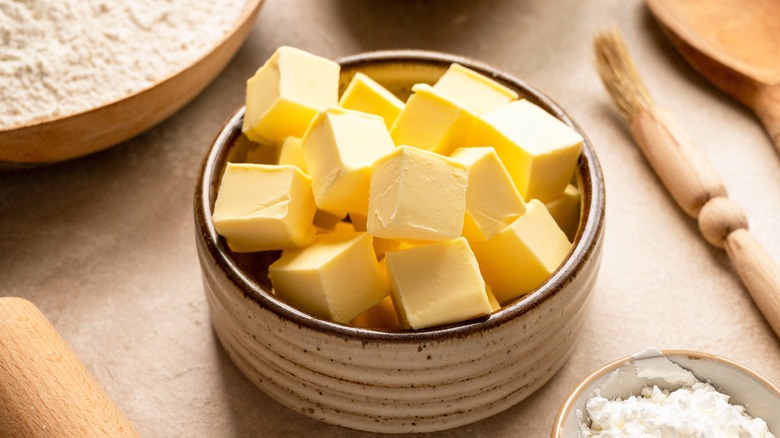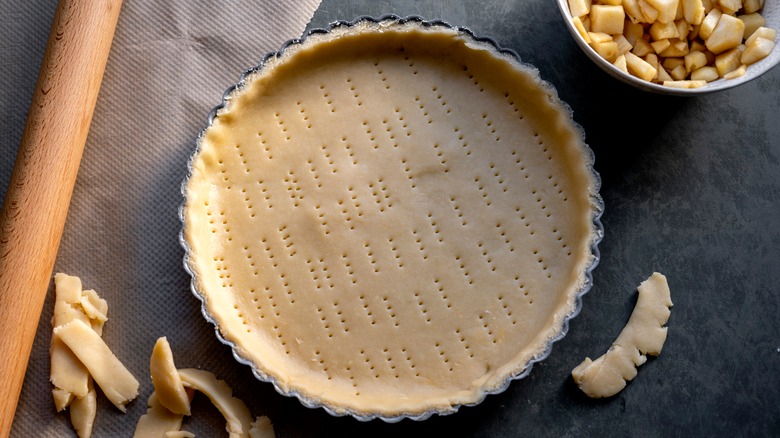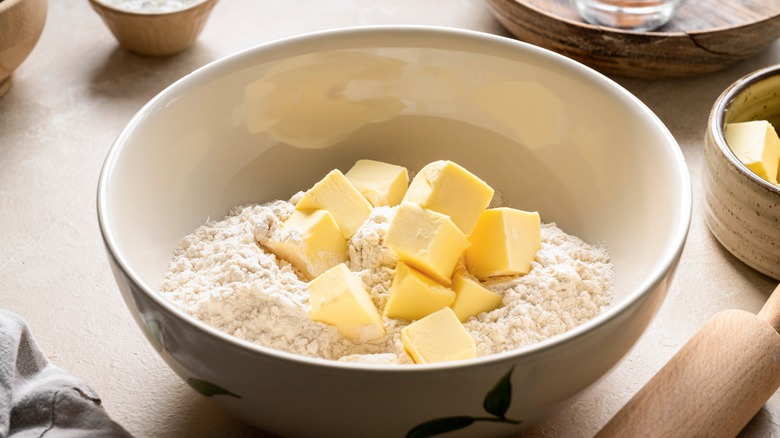Why You Should Start Pinching Your Butter More
Many people love pie, whether it's apple, pecan, or any of the other countless flavors. Though pies are often regarded as one of the most delicious baked goods, there are several steps that go into making them enjoyable. One of the most common problems with pies is a soggy crust, says Whole Foods Market. There are several different methods for preventing sogginess, and the best method depends on the type of pie you're making. According to Food Network, if you plan on baking a fruit pie, you should combine the fruit with cornstarch to thicken up the filling and prevent liquid from seeping into the crust. If you want to bake a pie with higher liquid content, such as pumpkin or pecan, it's an excellent idea to prebake the pie crust.
Perhaps the most important component of a perfect pie crust is butter, per Land O'Lakes. Many people pinch, or cut, butter into their flour. This technique simply involves mixing cold butter with flour to ensure that it forms small clumps. So, why is this pinching method so important?
Butter provides a flaky crust
It's important to pinch your butter because this ingredient is essential for making a sturdy, yet flaky pie crust. According to Land O'Lakes, the butter you pinch into your flour should always be cold, as cold butter melts when the pie is placed in the oven. The melting of the cold butter forms gaps in the crust, which results in the formation of flaky layers.
Because the butter's cold temperature is the key to flakiness, it's important that you pinch butter as fast as possible to ensure that it doesn't melt before you bake the pie. According to BBC Good Food, you can pinch butter by using your fingers to rub the chilled ingredient into flour, giving it the appearance of bread crumbs. However, though this pinching method is probably the easiest, it's not the most effective, as the heat from your fingers could cause the butter to melt. Instead, you might want to use a utensil, such as a fork, to pinch or cut in the butter, via Land O'Lakes.
Do you have to pinch butter in pie crusts?
While chilled butter will give your pie crust a delicious, flaky texture, you definitely do not have to use it. Some other fats that are commonly used instead of butter include lard and vegetable oil, per Webstaurant Store. Each of these fats has its own advantages and disadvantages. For example, as established, butter is great for flakiness, but it melts very easily, meaning that it can be difficult to pinch into flour. Lard is often regarded as more efficient than butter at providing a flaky crust, as it releases a higher amount of air when baked, giving the crust more layers. However, lard is generally more difficult to find than butter.
According to Food Network, vegetable shortening works well in pie crusts because it doesn't melt as easily as butter does. It also provides the same flakiness that butter and lard do, but it doesn't have as much flavor as these other two options. If vegetable shortening or lard just aren't appealing to you, you can always pinch some chilled butter into your crust to bake a delicious, flaky pie.


